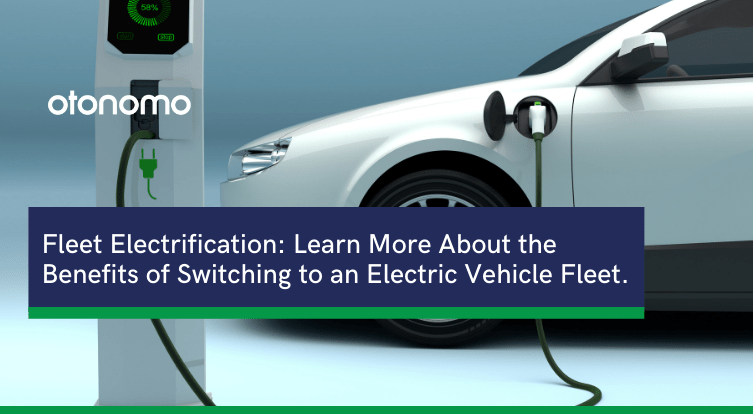
Since 2019, economic uncertainty and the supply chain crisis led to a downturn in global car sales, however, one sector that continues to enjoy significant growth is electric vehicles (EVs). A study by Meticulous Research projects the EV market will continue growing at a CAGR of 33.6%, citing a shift to electric in both Light Commercial Vehicles (LCVs) and Heavy Commercial Vehicles (HCVs). Fleet electrification is playing a significant role in driving the EV market.
McKinsey attributes this growing electrification of fleets to incentives such as regulations restricting carbon emissions, government subsidies reducing EV purchase price, growing investments in charging infrastructure, and more, and projects that EVs will comprise 10 – 15% of all fleet vehicles in the US by 2030.
Nevertheless, the same barriers that are impeding consumer adoption of EVs are magnified for fleet operators who must ensure reliability, and in many cases, operate under time and efficiency constraints.
Optimizing routes for EVs to reduce range anxiety
One of the biggest barriers to EV adoption is range anxiety. For fleet operators it is an even greater concern. Both LCVs and HCVs are constantly on the road, moving from one location to another to deliver goods and services, racking up higher daily mileage than a typical consumer vehicle. An unplanned stop to charge a vehicle (typically taking at least 20 to 30 minutes) can result in expensive delays that a fleet cannot tolerate.
However, with the help of connected vehicle data, fleet operators can plan a vehicle’s daily route taking into account both static factors like the order of stops and distance, and dynamic factors like traffic conditions, weather, and road hazards. In the case of EVs, the algorithm can also use EV intelligence to learn from historical data and dynamically predict battery “dead zones” along the route. With that data available, an intelligent routing algorithm can offer charging recommendations considering factors like availability and types of charge points along the route, wait times when the vehicle is expected to be near the recommended charge point, and more. Optimizing both cost and time per charge as well as routes. These factors also play a crucial role in selecting the right charging partners or deciding to deploy a self-owned and operated charge point network.
Planning a fleet’s charging infrastructure
Another significant concern is availability of charge points. Exro reports that the public charging infrastructure is the biggest challenge for EV adoption by consumers with an emphasis on charger accessibility.
What is the biggest challenge for eMobility adoption right now?
What is it about charging infrastructure that creates a barrier to EV adoption?


Even more so for fleets, where timely and reliable delivery is mission critical. Fleets may, therefore, supplement their on-site charging infrastructure with additional charging options. There are different ways to do so, including dedicated sites along the road network, depot roaming through partner sites and dedicated agreements with charging point operators.
Charging is a complex issue and questions must be answered for each site or deal, around site design, optimal mix of charging equipment (slow, fast, ultra-fast), which charging provider to use, sufficiency of the power grid, and more.
The answers to many of these questions come from both EV data, and EV intelligence. EV data informs the fleet operator about how the vehicle is utilized, the distances it needs to travel, routes, and charging characteristics. EV intelligence along with an origin/destination matrix of the fleet’s routes can help identify relevant low battery zones and correlate them with the electric grid, and can point to optimal locations to set up a charging site. Put together, all these data points help fleets establish a strategy to roll out an electric fleet while maximizing their ROI.
EV data replaces fuel cards
Electrifying the fleet used by company employees brings up the question of reimbursement for charging. Traditionally, fuel cards were a solution for ICEs, being billed directly back to the company. EV charging poses new challenges. Charge cards may provide a partial solution, but they limit the driver to specific charging providers which only increases range anxiety. There’s also the question of calculating the cost of charging the car at the employee’s home, which must also be considered. Using EV data, a company can accurately determine how much to compensate an employee for charging the car at home. Fuel cards become a thing of the past and charge reimbursement becomes transparent to the employee. EV adoption is on the rise, spearheaded by fleet electrification. By replacing ICEs with EVs, fleets enjoy immediate cost benefits in the form of government incentives like purchase-price subsidies and tax exemptions. Once the vehicles are purchased, fleets can continue to reap operational cost benefits through the use of EV car data to assess EV suitability, optimize routing, plan charging infrastructure, manage EV charge reimbursements and more. Want to learn more about how to make the most of the new opportunities connected vehicle data offers. Click here













More Stories
Is Your 70 Series Land Cruiser Underperforming? Here’s How to Unleash Its True Potential
What to Do After a Motorcycle Accident to Protect Yourself
Injured in a Motorcycle Crash? Talk to an Attorney Now